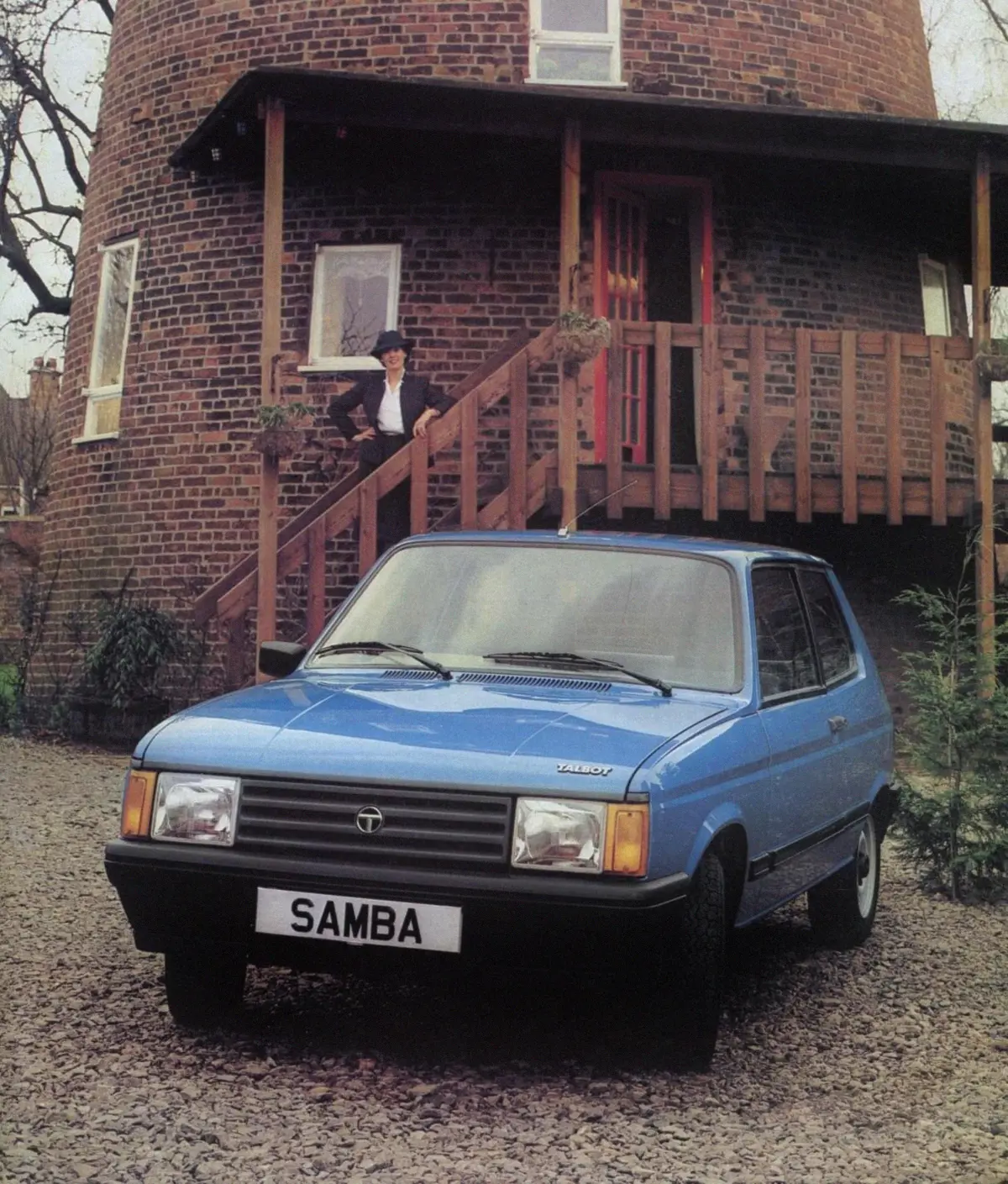THE TALBOT SAMBA – A CELEBRATION
13 April 2021
Of all the cars celebrating their 40th birthday in 2021, the Samba is one of the rarest, with just 19 remaining in use. They were the last new car to bear the Talbot badge - and one that represented a fresh direction for the brand.

The Samba has often been regarded as the swansong of the 104, with its floorpan and engines derived from Peugeot’s first supermini. The very attractive lines were by Talbot’s design centre in Whitley and belied the Samba’s rapid development. Work only commenced on Project C15 in 1979 as PSA urgently needed a Talbot-badged replacement for the RWD Sunbeam.
The first Sambas left the factory in October 1981, with sales commencing three months later. “Europe’s Most Economical Car” was sold as the 954cc LS, the 1,124cc GL, with a radio, rear wiper & washer and – a sign of how Spartan entry-level cars could be in the early 1980s, halogen headlamps. As for the flagship 1,360cc GLS, the specification included five-speed transmission, electric front windows and a cassette player.
At that time, the Samba faced a formidable array of competitors, from the Austin Metro to the Ford Fiesta. Car magazine thought the Talbot could have “emerged the winner” of its test, opposite the Renault 5 TL and the VW Polo C, but it suffered from awkward accommodation and felt “undeservedly heavy” in town. What Car acclaimed the Samba’s “refined, clean revving engine” and the gear change’s excellence. They also enjoyed the motor’s smoothness - “unique in the present range of Talbot cars”.
1982 saw the very appealing Pininfarina-designed Cabriolet; “Samba Goes Topless” stated the Carry On style advertising headline. At £6,196 it may have cost £400 more than a standard GLS, but the Samba drophead had few rivals; the larger VW Golf GL Convertible was nearly £900 more expensive. As Autocar noted, the Talbot provided ”all the benefits of open-top motoring, when the sun shines, with very few drawbacks”.
Meanwhile, the Samba Rallye was a very appealing entry-level rally car and very much heir to the Sunbeam Ti. By the mid-1980s Talbot offered a spate of limited edition models; the Pullman, the Style, the Roller with its distinctive yellow wheels and the Trio. The last-named is this writer’s favourite, partially because of its denim upholstery but mainly because its name is reminiscent of a certain chocolate bar.
In 1984, plans were underway for a second-generation Samba based on the forthcoming Citroën AX but its prospects already appeared limited. When PSA acquired Chrysler’s European operations in 1979, the various models were re-named as ‘Talbot’. Unfortunately, the brand never established itself with motorists, not least because of an incohesive line-up and ill-defined image.
And when the proposed ‘Talbot Arizona’ debuted in 1985 as the Peugeot 309 it sounded the death knell for the marque. A further challenge to the Samba was presented by the 205, which virtually redefined its market sector in 1983. As Peugeot and Talbot operated combined dealerships, the two in-house rivals occupied the same showroom.
Brochures promoted the Samba as smart urban transport, but by 1985 it already seemed redolent of the recent past. Production ended in May the following year, five months before the AX’s launch. Today, the last of the Talbots is a deservedly collectable machine – and this very 1980s Mockney-voiced advertisement encapsulates its appeal.
Why choose Lancaster Insurance?
Here at Lancaster, we love classic cars as much as you do and we understand what it takes to protect them for future generations.
We have links with some of the top classic car clubs around the country and some of our policies even offer discounts of up to 25% for club members.
Other benefits of classic car insurance through Lancaster can include:
- Historic rally cover
- Static show cover
- Limited mileage discounts
- Choice of repairer
- 24-hour claims helpline
Give your classic the protection it deserves and get a quote for your classic today.
